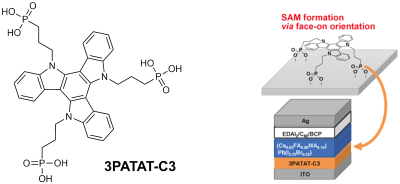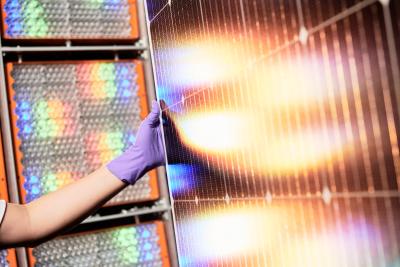Perovskite Solar - Page 26
Merida Aerospace to develop perovskite solar cells for use in space
Merida Aerospace, a Tampa-based aerospace company, has announced it is developing perovskite solar cells tailored for space applications, with a specific emphasis on enhancing performance and economy for low Earth orbit (LEO) satellites.
LEO satellites often rely on solar panels as their primary power source, capturing sunlight during orbital solar exposure for sustained operation. These panels enhance weight efficiency by reducing the need for excessive number of batteries, enabling autonomous function during intermittent access to sunlight while in low earth orbit.
Spotlight on the DIAMOND EU project
The DIAMOND project aims at developing ultra-stable, highly-efficient and low-cost perovskite photovoltaics with minimized environmental impact, promising stabilities far beyond all previous achievements of photovoltaic solar cells.
It was launched in October 5th, 2022, and is planned to continue until November 30th, 2025.
Sekisui Chemical to initiate perovskite PV production in Slovakia
Reports suggest that Slovakia’s Deputy Prime Minister and Minister of Economy, Denisa Sakova, has signed a memorandum of understanding with Japan's Sekisui Chemical.
Sekisui Chemical is designing lightweight perovskite solar technology and aims to commercialize its flexible panels in 2025. “We are interested not only in working together on the expansion of this technology in Slovakia, but at the same time we also want to explore the possibilities of locating the production of such panels in our country,” said Sakova.
TCI launches new high-performance hole collecting material for perovskite solar cells
Tokyo Chemical Industry (TCI), a global supplier of laboratory chemicals and specialty materials, launched a new high-performance hole collecting material (HCM), that can be used to enhance the performance of inverted perovskite solar cells, as it efficiently collects holes from the perovskite layer.
TCI's new 3PATAT-C3 is a SAM formation reagent, with face-on orientation to the substrate surface. It strongly binds to the ITO layer, has a high coverage ratio and it offers efficient charge recovery from the perovskite layer. The material is now available in high purity, and preparations are underway with a view to large-scale supply. See here for more info.
CubicPV terminates plans for U.S silicon wafer factory
In December 2022, CubicPV announced plans to establish 10 GW of conventional mono wafer capacity in the United States. Now, CubicPV said it has halted its plans to build a major U.S. silicon wafer factory, citing a collapse in product prices and soaring construction costs. It was reported that the Company will instead be focusing on producing tandem perovskite solar modules.
As part of its restructuring scheme, the company reduced its workforce and eliminated positions tied to the U.S. factory effort. The Company said it would support the affected workers by providing severance packages and extended health benefits.
Researchers develop strategy that enables world's most efficient quantum dot solar cell
Ulsan National Institute of Science and Technology (UNIST) researchers have developed solar cells using narrow bandgap organic cation-based perovskite-based quantum dots (PQDs) and demonstrated substantially higher efficiency compared with their inorganic counterparts.
The team stressed that research to this point has predominantly focused on inorganic cation PQDs despite the fact that organic cation PQDs have more favorable bandgaps. However, the recent study unveiled a novel ligand exchange technique, that enables the synthesis of organic cation-based PQDs, ensuring exceptional stability while suppressing internal defects in the photoactive layer of solar cells.
Shenzhen Hiking PV to set up perovskite-silicon tandem PV factory
Shenzhen Hiking PV has announced plans to set up a joint venture with a state-run investment company to build gigawatt-level perovskite/polysilicon tandem cell and panel production lines in a new factory in Zhongshan, Guangdong province, China.
The factory is planned to have a total capacity of 7 GW of perovskite/polysilicon tandem cells, with an investment of CNY 5 billion (around USD$700 million). The plan is to build the plant in three phases.
Oxford PV and Fraunhofer ISE announce full-sized tandem PV module with 25% efficiency
A research team from the Fraunhofer Institute for Solar Energy Systems ISE has reported a PV module using perovskite silicon tandem solar cells from Oxford PV with an efficiency of 25% and an out-put of 421 watts on an area of 1.68 square meters, stating it is a record efficiency for a silicon perovskite tandem solar module in industrial format.
For the manufacturing process, the researchers used equipment at Fraunhofer ISE's Module-TEC that is already used in mass production and optimized the processes for the tandem technology.
Perovskia launches factory for indoor solar cell manufacturing
Switzerland-based Perovskia recently announced it is establishing a factory in Aubonne, Switzerland, to produce a million custom-designed perovskite devices annually.
Perovskia is a spinoff of the Swiss Federal Laboratories for Materials Science and Technology (EMPA). It was founded to develop the market for customized perovskite solar devices as battery replacements.
Researchers explore perovskites’ self-healing properties for PSC use in space exploration
Researchers at the University of North Texas, Rochester Institute of Technology, University of North Carolina, National Renewable Energy Laboratory (NREL), University of Oklahoma and NASA Glenn Research Center set out to deepen the understanding of perovskite photovoltaics' ability to recover, or heal, after radiation damage, by studying the effects of radiation based on different energy loss mechanisms from incident protons which induce defects or can promote efficiency recovery.
Dual dose irradiation experiments. Image from Nature Communications
The team designed a dual dose experiment first exposing devices to low-energy protons efficient in creating atomic displacements. Devices were then irradiated with high-energy protons that interact differently. Correlated with modeling, high-energy protons (with increased ionizing energy loss component) effectively anneal the initial radiation damage, and recover the device efficiency, thus directly detailing the different interactions of irradiation.
Pagination
- Previous page
- Page 26
- Next page






